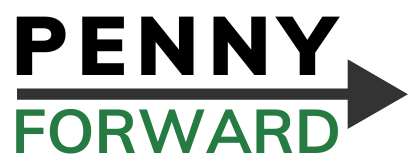A Message from Penny Forward Founder and CEO, Chris Peterson
Last week, I shared some thoughts on how complicated the Social Security system can be and why it’s important to stand up for yourself when facing unfair decisions. This week, I want to get personal and tell you about my own recent experience with Social Security Disability Insurance (SSDI)—and why fighting back was so important.
As someone who receives SSDI benefits, I recently had the unexpected and frankly stressful experience of being told I owed Social Security money. After over 20 years away from the SSDI program, I started receiving benefits again. Imagine my surprise when Social Security suddenly informed me I’d been overpaid—way back in 1996!
Here’s the deal: it’s completely unfair for Social Security to wait decades to tell you about an overpayment. It leaves beneficiaries blindsided and overwhelmed. When I spoke to someone at Social Security about this issue, even they acknowledged how long ago this was. Clearly, notifying someone of a debt nearly 30 years later isn’t just inconvenient—it’s unjust.
So, instead of panicking, I decided to fight back. Social Security provides an option to request a waiver of overpayment recovery, which essentially asks them to forgive the debt. To request this waiver, I filled out form SSA-632BK, a document available as a fillable PDF that’s surprisingly screen reader-friendly. That part of the process was straightforward. However, what came next highlighted some frustrating accessibility barriers.
To submit the form, I had to print it out and sign it by hand. Thankfully, I had a friend visiting who could assist me with signing the document. But not everyone has a sighted person around when needed. If you find yourself in a similar position and don’t have immediate assistance, consider using a visual interpreter service like Aira. With their help, you can position a signature guide on the form to confidently place your signature independently.
Alongside the waiver request, I wrote a detailed letter explaining my situation. In this letter, I emphasized how unfair it was to only now discover the supposed debt from 1996, and I highlighted the financial hardship it would cause me if I had to repay it. To illustrate my point, I printed my last three bank statements, clearly demonstrating just how tight my budget is right now. Providing evidence of your financial circumstances can strengthen your case significantly.
But what about actually submitting these documents? We’ve all heard it—if you have an issue with Social Security, the best way is often to handle it face-to-face at your local office. With a mix of curiosity and anxiety, I decided to put this advice to the test. I hadn’t visited a Social Security office in over 20 years, and I was admittedly nervous about the whole ordeal.
On a recent Friday morning, I arrived at the office right as it opened at 9:00 AM. There was already a small line, but thankfully, it moved quickly, and within about ten minutes, I was at the front desk. From there, it felt a bit like going through airport security—I passed through a metal detector, then had to check in at a kiosk. The kiosk itself seemed accessible enough, but unfortunately, I didn’t bring headphones, so I wasn’t able to use the audio option. Luckily, a friendly security officer stepped in to help me check in.
After a brief wait, my number was called, and I headed to the service window. I handed my paperwork to the woman working there, and she promptly made copies, returning the originals to me with a timestamp as proof they’d been received. A quick tip: always make sure you leave with a receipt or stamped documents. You need proof that your paperwork was accepted by Social Security.
From start to finish, the entire visit took roughly an hour. Honestly, it went much smoother than I’d feared. Was I nervous beforehand? Absolutely. But walking out afterward, I felt a genuine sense of relief and empowerment.
Could I have mailed everything through certified mail instead? Sure. However, I felt it was important to experience the process firsthand so I could confidently recommend the best route to others in similar situations. Now, speaking from experience, visiting in person was quicker and easier than I’d expected.
Here’s the heart of my message: it’s crucial to stand up for yourself and exercise your power. Social Security, like any government program, can be daunting. The bureaucracy, paperwork, and waiting can seem overwhelming, especially when accessibility barriers add extra layers of difficulty. But please, don’t let your fear stop you from taking action. Each time we assert ourselves, each time we push through anxiety to defend our rights, we become stronger and more financially resilient.
Not everyone’s experience with Social Security will be as straightforward as mine. Right now, especially, many people face delays and challenges. But by not giving up, by advocating for ourselves, we create a path toward financial stability. We can’t control all aspects of how Social Security handles things, but we do have the power to respond thoughtfully and assertively.
In the end, taking control of your financial health is incredibly empowering. No matter how intimidating it seems, don’t shy away from confronting unfair decisions. The more we exercise our rights, the closer we get to a financial life that’s truly secure and healthy. Let’s keep pushing forward together.
Best,
Chris Peterson, AFC®
Founder and CEO, Penny Forward

Leave a Reply